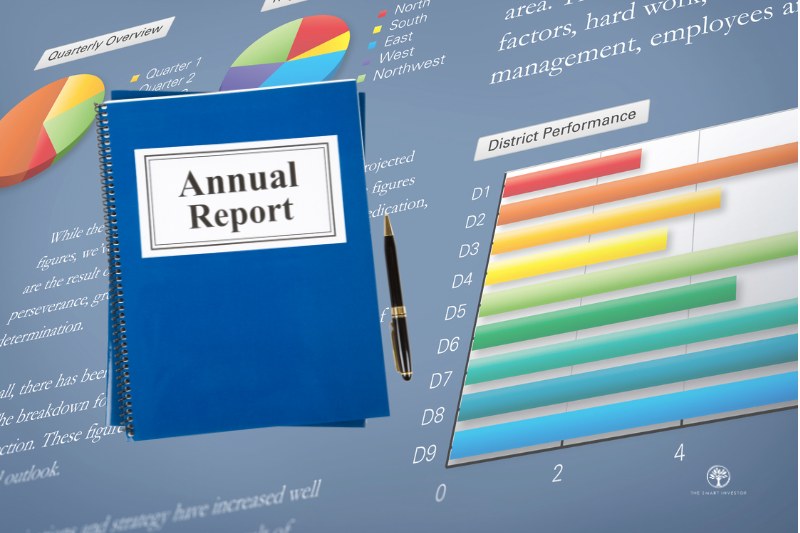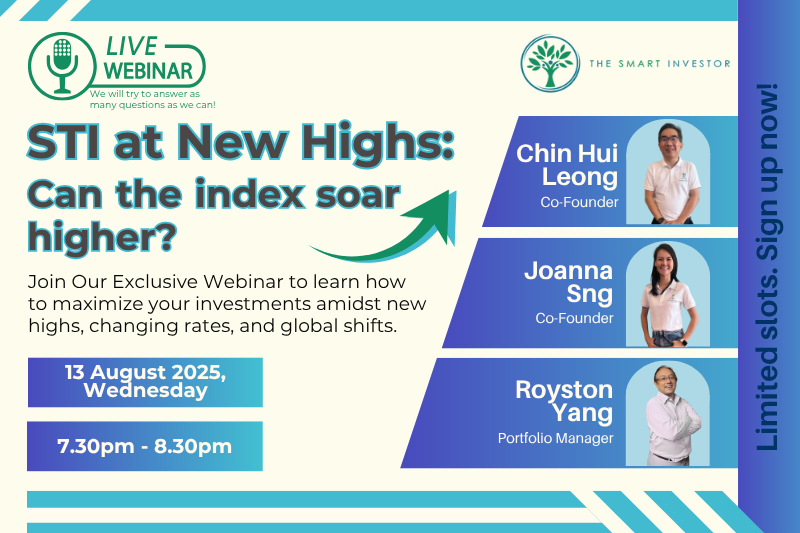Imagine waking up to find the companies you follow have stopped reporting quarterly results.
No more earnings calls every three months.
No more regular updates on how the business is performing.
This could become reality if US President Trump’s push to end quarterly reporting succeeds.
The proposal sounds simple enough: let companies report twice a year instead of four times.
Less paperwork, more focus on long-term strategy.
But here’s what most investors haven’t considered — we already know what happens when companies get this choice.
The Singapore Experiment
Back in February 2020, Singapore made semi-annual reporting the new minimum standard for its stock market.
In hindsight, the timing couldn’t have been worse — the world was about to shut down for a pandemic — but the results are telling.
When given the choice, most companies jumped at the chance to report less often.
Singapore Exchange (SGX: S68), the bourse operator itself, switched to semi-annual reporting, setting the tone for others to follow. The message was clear: if the stock exchange itself doesn’t offer quarterly updates, why should anyone else?
But here’s where it gets interesting.
Not every company followed suit.
DBS Group (SGX: D05) continued reporting quarterly results, fielding questions from media and analysts every three months.
The bank understood something crucial: in financial services, where confidence is currency, regular communication builds trust.
United Overseas Bank (SGX: U11) or UOB and Oversea-Chinese Banking Corporation (SGX: O39) or OCBC took a middle path, providing updates and media briefings in between semi-annual reports — enough to keep investors informed.
The lesson?
When reporting becomes optional, companies reveal their true colors.
The Weather Problem
Proponents of quarterly reporting react with horror to any suggestion of change.
For them, quarterly earnings are a continuous affirmation that management is executing its strategy.
It’s particularly crucial when companies hit rough patches — investors can track recovery efforts more closely rather than waiting six months for an update.
Yet this three-month ritual doesn’t work for every business.
Consider Tractor Supply (NASDAQ: TSCO), which sells everything from farming equipment to winter wear across rural America.
For them, quarterly reporting borders on the absurd.
Why? Their results swing wildly based on when winter arrives.
Stock up on winter gear in November but snow doesn’t come until late December?
You’re stuck with unsold inventory that looks terrible on the quarterly report.
But zoom out to six months to a year, and those products clear out just fine when winter finally arrives.
One quarter’s disaster becomes the next quarter’s triumph — a meaningless volatility that tells you nothing about the business’s true health.
The Bare Minimum Problem
But here’s what really matters: having quarterly updates isn’t the same as having good updates.
Walk through any earnings season, and you’ll find management teams that have mastered the art of saying nothing while appearing to say something.
They provide vague commentary about “challenging market conditions” and commit to remaining profitable “barring unforeseen circumstances” — statements about as useful as an ice cream in a sauna.
You barely get a taste of what’s actually happening inside the business.
Meanwhile, companies that actually want to communicate with shareholders find better ways to do it.
Take SATS (SGX: S58), Singapore’s ground handling and catering service provider.
In 2024, the company organised a Capital Markets Day to provide deeper insights into strategy than any quarterly report ever could.
Under this format, management spends hours walking investors through business developments, market opportunities, and long-term planning — the kind of substantive discussion that quarterly earnings calls rarely allow.
In the US, the communication landscape is even richer.
Investor days, industry conferences, and analyst meetings create multiple touchpoints throughout the year. These avenues often produce more valuable information than the scripted quarterly earnings ritual.
The frequency of reporting, it turns out, matters far less than the quality of communication.
The Investor Divide
Meanwhile, different investors have different needs.
Value investors, who often focus on turnaround situations, need regular updates to track whether the management’s recovery plan is working.
For them, quarterly reports are vital signs — proof that the patient is recovering.
Dividend investors have their own concerns.
Moving to semi-annual reporting often means moving to semi-annual dividends — turning that reliable monthly income into sporadic lumps that are harder to budget around.
Growth investors, paradoxically, may benefit most from less frequent reporting.
They’re betting on long-term value creation, not quarterly earnings beats.
For them, the constant pressure of quarterly reporting can actually destroy value by forcing management to prioritise short-term metrics over long-term investments.
But there’s another factor to consider: in the stock market, quarterly reporting has become the scorecard for an entire ecosystem of analysts, traders, and algorithms.
Every earnings season triggers billions in trades as funds rebalance based on whether companies beat or missed expectations by a penny.
Remove this quarterly catalyst, and you change how markets price stocks.
The question becomes: is that change good or bad?
The Trust Test
This brings us to the ultimate question every investor must face: If you don’t trust a company to report semi-annually, why are you invested in it at all?
Think about what quarterly reporting really provides.
It’s not insight into strategy — that takes years to play out.
It’s not proof of competitive advantage — that shows up in decades of returns.
It’s like weighing yourself four times a day instead of once a month — the frequent measurements just add anxiety, not insight.
For high-quality businesses with strong competitive positions and trustworthy management, these frequent check-ins add little value.
The business will compound wealth over time regardless of whether it reports two times or four times per year. The reporting frequency doesn’t alter the fundamental value of the business.
But for questionable companies with weak governance or unclear strategies, even quarterly reporting isn’t enough. These businesses will find ways to obscure problems regardless of how often they’re required to disclose results.
Get Smart: The Real Signal in the Noise
Warren Buffett put it best: “Only buy something that you’d be perfectly happy to hold if the market shut down for 10 years.”
The move from quarterly to semi-annual reporting won’t destroy transparency — it will reveal it.
Those doing the bare minimum today will remain opaque regardless of reporting frequency.
They’ll find ways to massage numbers, obscure problems, and avoid tough questions whether they’re reporting twice or four times per year.
As an investor, your job isn’t to monitor companies every 90 days.
It’s to find businesses you trust enough to own without constant supervision.
If semi-annual reporting makes you nervous about a holding, that’s not a reporting problem — it’s a conviction problem.
The real question isn’t whether companies should report quarterly or semi-annually.
It’s whether you’ve chosen companies worth trusting when they go quiet.
Because in the end, great businesses create value between reports, not during them.
Imagine a life where steady income flows, no matter the market. Our new free report, “Retire Early with Dividends,” reveals how. We’ve pinpointed 5 dependable Singapore dividend stocks that offer a proven, stress-free path to financial freedom. Stop just dreaming and start building your early retirement plan today. Your free guide awaits here.
Follow us on Facebook, Instagram and Telegram for the latest investing news and analyses!
An earlier version of this article appeared in The Business Times.
Disclosure: Chin Hui Leong owns shares of DBS Group, OCBC, SATS, Tractor Supply, and UOB.





